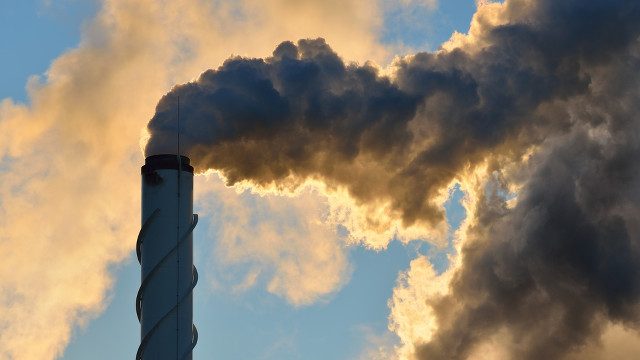SUMMARY
This is AI generated summarization, which may have errors. For context, always refer to the full article.
 Davao City mayor and now president-elect Rodrigo Duterte has won the highest position of the land with an incontestable lead, receiving almost twice as many votes as his greatest rivals.
Davao City mayor and now president-elect Rodrigo Duterte has won the highest position of the land with an incontestable lead, receiving almost twice as many votes as his greatest rivals.
One wonders, however, as to how green a Duterte presidency can go.
He called the United Nations (UN) “hypocrites” for pressuring developing countries to reduce their carbon emissions while failing to sanction industrialized countries which are major contributors to the global carbon footprint.
Add to that his pro-coal position and notably low score in the thematic issue of energy transformation and democracy, based on the scorecard results of the Green Thumb Coalition survey.
When asked how the Philippines can live up to its promise to the UN of reducing carbon emissions by 2030, Duterte said the Philippines cannot just let go of power plants because it is a developing country that has high energy demands. He even went further by hitting former US Vice President Al Gore for urging the Philippines to go carbon-free but failing to make his own country stop its reliance on coal energy.
Remember how Duterte defended AboitizPower’s coal-fired power plant, saying that the $4-billion project is the biggest investment in Davao City? Despite the strong opposition expressed by environmental groups, he argued that the project is needed by the city to assure investors of a stable power source.
The Green Thumb Coalition, a nationwide network of around 40 NGOs and civil society groups, conducted a survey assessing where a candidate stands on certain environmental issues based on their answers to 9 sets of questions, crossed-referenced with their profiles, backgrounds, pronouncements, and connections.
With a measly mark of only 43%, Duterte scored the lowest among all the presidential candidates in terms of phasing out dirty coal energy in the country, while Senator Miriam Defensor Santiago got the highest score of 93%.
However, Duterte scored fairly well in other thematic areas such as climate justice, natural resource and land use management, and people-centered development. Former interior secretary Mar Roxas got the lowest score overall.
Fast energy transition needed
With the government’s current pace in operationalizing measures that mitigate the effects of climate change, and with our lawmakers’ signature swiftness in passing laws that address climate-related challenges, the Philippines would probably enjoy a totally decarbonized economy after about two centuries.
Calibrating our competitiveness as against other countries that began advancing renewable energy, here are some of the runners-up that made some pretty humble achievements:
- Costa Rica (also a developing country, by the way) boasted that it had been running on 100% renewable energy in 2015. It now aims to go totally carbon-neutral in the next 6 years.
- Iceland has been generating 100% of its electricity with renewables. According to the National Energy Authority (NEA) of Iceland, the Nordic island nation generates 75% of its power from large hydro and 25% from geothermal.
Real hypocrisy is when one projects himself to be an environmental champion in front of the international community, but approves at least 27 more coal-fired power plants barely a month after coming back from the UN climate talks in Paris in December 2015. The new set of leaders should be more sincere and aggressive in implementing policies that incentivize the use of green energy and facilitate the fast energy transition from fossil fuels to renewables.
Gaps and challenges in renewable energy
The Philippines is said to be the second largest producer of geothermal power worldwide, next to the United States. According to the Department of Energy (DOE), geothermal generation accounted for 22.2% of the power mix. The government agency further said that “apart from providing a substantial amount of electricity, geothermal resources, at the same time, help the country save huge amounts of foreign exchange through the displacement of a large fraction of imported fuels.”
However, despite having several active geothermal areas in the archipelago, much work needs to be done. The DOE needs to attract more investors by raising awareness and interest in opportunities in steamfield development.

The government also needs to invest in modern technology to eliminate natural factors that constrain the development of some promising geothermal hotspots. In Tongonan Field in Leyte, the wellhead assembly suffered a blowout and was knocked off due to the fast rate of corrosion caused by geothermal fluids.
The country also has vast hydropower potential. The DOE argues that when optimized, more than 10% of the electricity requirements can be supplied by hydropower generation.
However, like geothermal power, the hydropower sector also faces numerous challenges. Further development of hydropower projects is said to bring risks like upstream flooding, destruction of agricultural areas and animal habitat, as well as disruption of communities in the affected areas. With the issues haunting the advancements of such big projects, the focus is shifted to ones significantly smaller in scale.
Other sources of renewable energy available in the Philippines include biomass, solar, and wind. While these 3 are expected to be among the major sources of energy in the near future, the country is still crawling its way to its big, hairy, and audacious goal of going coal-free due to the lack of support and “modest” investments made by the government in renewable energy.
Role of young people
There have been mass protests conducted by religious and environmental groups to campaign against fossil fuels. Break Free is one of the largest anti-coal movements, happening in at least 15 countries all over the world, including the Philippines.
Last May 4, over 10,000 people gathered in Batangas for the “Piglas Batagas! Piglas Pilipinas!” campaign. Piglas is a call for the incoming president and other new government officials to scrap the Pinamucan coal plant and the 26 other coal-fired power plants in the pipeline. It is also a demand for the phase-out of the 19 existing coal plants nationwide.
The youth play a central role in changing the climate situation. Many youth leaders from different parts of the globe are risking arrest by demonstrating and demanding action to mitigate the effects of climate change. If our leaders remain ignorant of the reality of climate change, it is the duty of young people to educate them and make them aware that climate change is here, it is happening, and it is eating us whole.
Duterte’s pro-coal stand might be indicative of a slow energy transition from dirty to renewable energy. Our role is to pressure his administration to promptly address challenges brought about by the world’s changing climate patterns, and to convince him that we must break free from fossil fuels.
While much has to be done to make these movements visible and powerful, the best thing to do right now is to get involved. – Rappler.com
Roy Joseph Roberto attended the YSEALI Generation Earth Workshop in Siem Reap, Cambodia. He is currently part of Climate Trackers’ BREAK FREE, a worldwide online writing campaign against fossil fuels.
Photo from Shutterstock
Add a comment
How does this make you feel?
There are no comments yet. Add your comment to start the conversation.